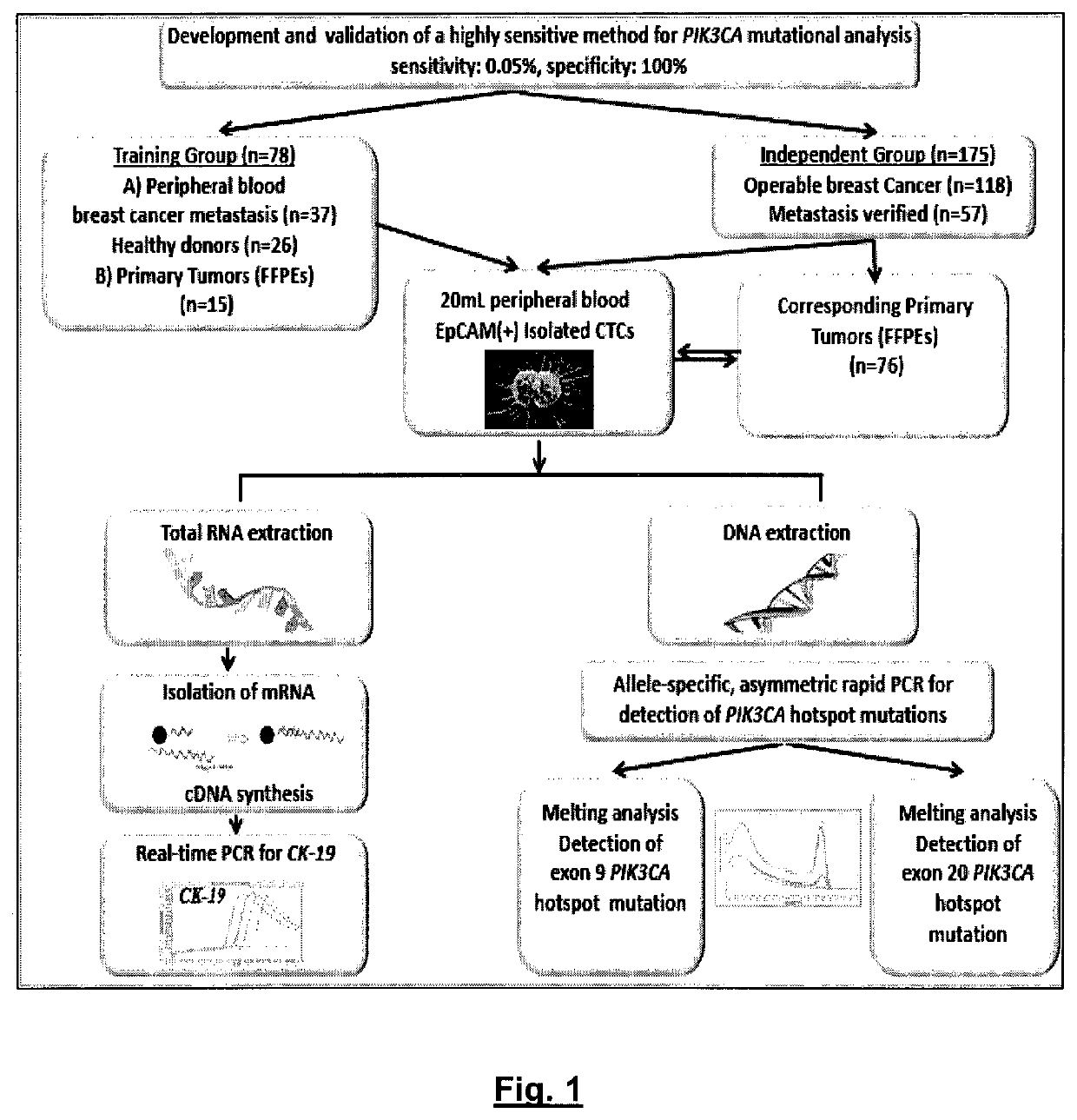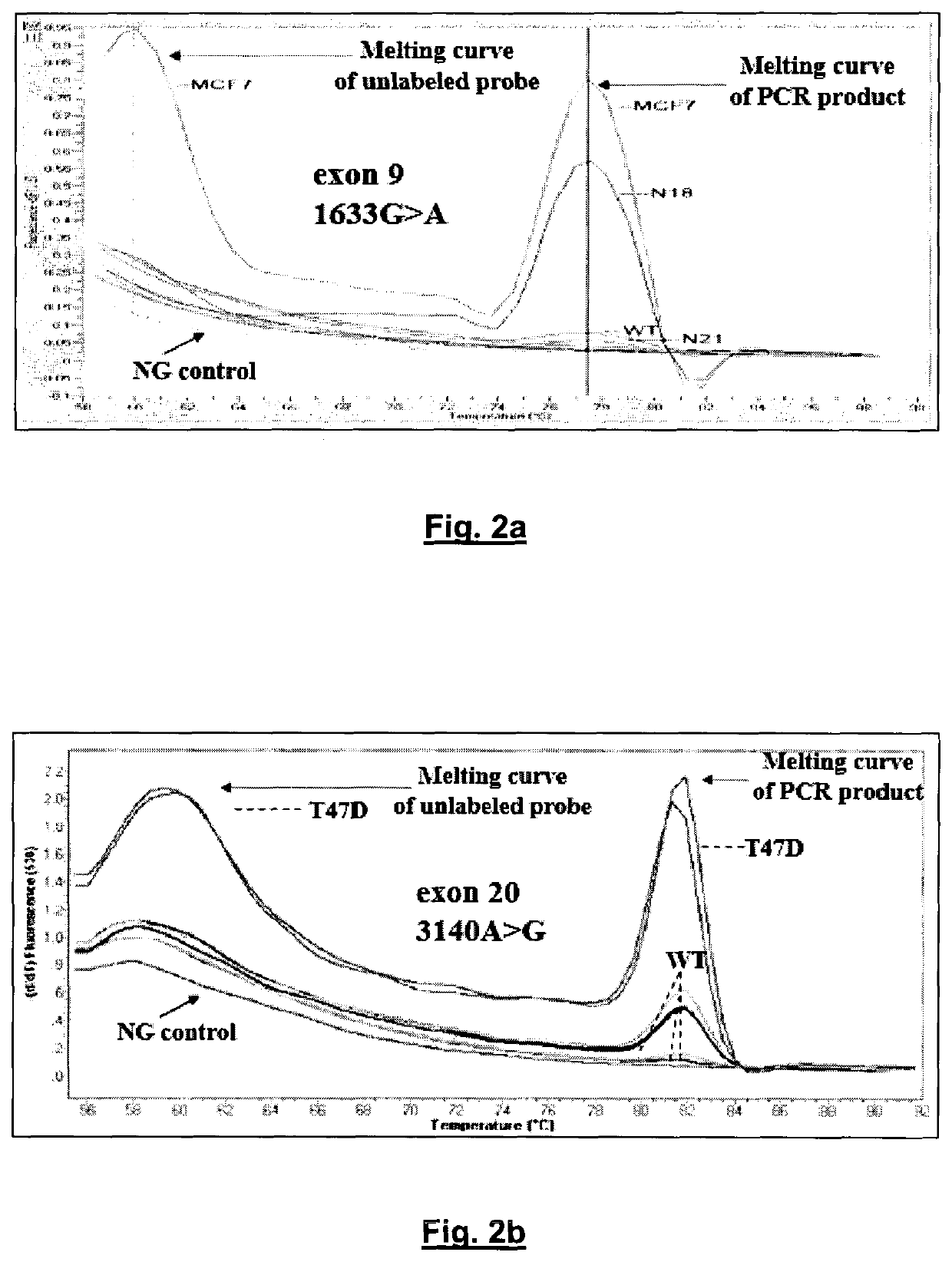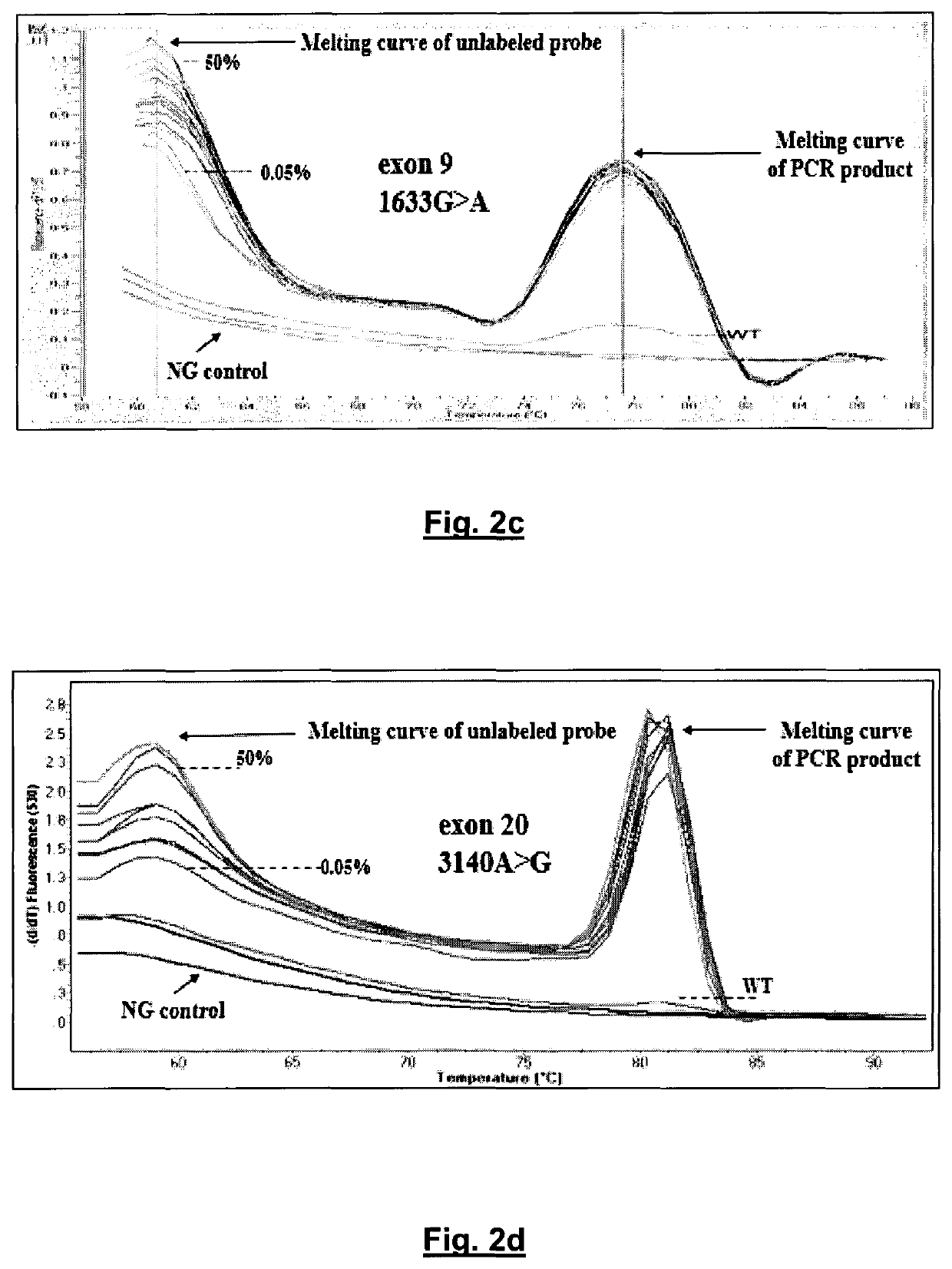Method of determining PIK3CA mutational status in a sample
a dna sample and high-sensitivity technology, applied in the field of high-sensitivity methods for determining pik3ca mutational status in dna samples, can solve the problems of increasing the risk of late disease relapse and death, low efficiency and yield, and the efficiency of cfdna extraction can directly influence the outcome of mutation detection, i.e., assay sensitivity
- Summary
- Abstract
- Description
- Claims
- Application Information
AI Technical Summary
Benefits of technology
Problems solved by technology
Method used
Image
Examples
example 1
[0167]Development and Validation of an Ultrasensitive and Highly Specific Method for PIK3CA Hotspot Mutations
[0168]The experiment flowchart of the study is outlined in FIG. 1.
[0169]Initially, an ultrasensitive and highly specific methodology for PIK3CA hotspot mutations (exon 9 and 20) in CTC was developed and validated. This assay is performed in a closed tube format and is based on the combination of allele-specific priming, competitive probe blocking of wild-type amplification, asymmetric PCR, and probe melting analysis [Markou A, et al. PIK3CA mutational status in circulating tumor cells can change during disease recurrence or progression in patients with breast cancer. Clin Cancer Res. 2014 Nov. 15; 20(22):5823-34]. In this assay design, allele-specific PCR sensitivity and specificity were enhanced with an unlabeled competitive wild-type specific blocking probe by asymmetric amplification and probe melting analysis. The melting analysis peak of this unlabeled competitive probe ...
example 2
[0174]Specificity Study.
[0175]The assay specificity of the developed method was first evaluated by analyzing gDNA isolated from 26 healthy female volunteers, in exactly the same way that was followed for patients with breast cancer. The developed method is highly specific, since there was no case of healthy female donors with any mutation in both PIK3CA exons in any of these samples. FIGS. 2A and B depict the specificity of the developed PIK3CA mutation assay and characteristic derivative melting curves obtained after PCR in the presence of unlabeled blocking probes which detect exon 9 1633G>A, hotspot mutation (A) and exon 20 3140A>G, hotspot mutation (B) are shown. Baseline is PCR negative control. PIK3CA mutations are detected by the derivative melting of the unlabeled blocking probe and mutant PIK3CA sequence, as amplified with the mutant allele-specific primer. Mutations are detected only if this peak at 60° C. is present. The other peak at higher temperatures is due to the PCR...
example 3
[0177]Sensitivity Study.
[0178]The sensitivity of the developed method was further evaluated by mixing mutated gDNA from cell lines, with WT gDNA at ratios of 50%, 25%, 12.5%, 2.5%, 1.25%, 0.5%, 0.25%, 0.125%, and 0.05% (see FIG. 2C for exon 9 1633G>A, hotspot mutation and FIG. 2D for exon 20 3140A>G, hotspot mutation). The WT gDNA samples that were used for dilutions were selected to match mutated gDNA quantity, quality, and quantification cycle (Cq), to minimize PCR bias. Melting curves were generated and the ability to discriminate melting transitions of the cell line dilutions from that of WT sample was assessed. For exon 9, it was possible to clearly discriminate a dilution corresponding to 0.05% of MCF-7 cell line (FIG. 2C), while for exon 20, it could also discriminate a ratio of 0.05% of T47D cell line dilution (FIG. 2D). Melting curves were highly reproducible.
[0179]For both exons, PIK3CA mutations are detected by the derivative melting of the unlabeled blocking probe and mu...
PUM
| Property | Measurement | Unit |
|---|---|---|
| temperature | aaaaa | aaaaa |
| temperature | aaaaa | aaaaa |
| melting | aaaaa | aaaaa |
Abstract
Description
Claims
Application Information
 Login to View More
Login to View More - R&D
- Intellectual Property
- Life Sciences
- Materials
- Tech Scout
- Unparalleled Data Quality
- Higher Quality Content
- 60% Fewer Hallucinations
Browse by: Latest US Patents, China's latest patents, Technical Efficacy Thesaurus, Application Domain, Technology Topic, Popular Technical Reports.
© 2025 PatSnap. All rights reserved.Legal|Privacy policy|Modern Slavery Act Transparency Statement|Sitemap|About US| Contact US: help@patsnap.com



